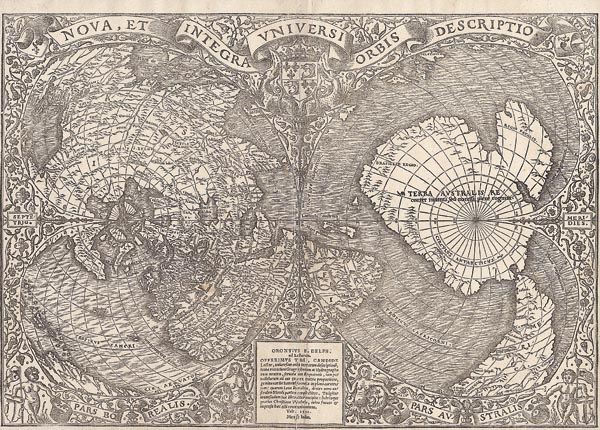Oronce Finé – a XVI. századi jeles francia térképész – híres, kettős szív alakú vetületeket ábrázoló, fametszetű világtérképének első kiadása. A Párizsban, 1531-ben – a Novus orbis regionum című atlaszban – megjelent munka több tekintetben is egyedi megoldásokat alkalmazott. Elsőként használta a térképészet történetében a – bonyolult geometriai számítások alapján megrajzolt – kettős szív alakú megjelenítést és a poláris vetületeket. A furcsa vetület alkalmazása – és Finé hatása – megfigyelhető Mercator 1538-as világtérképén, később pedig Lafreri de Jode művein egészen a XVI. század végéig. Bár térképe készítésénél Finé a legújabb felfedezésekre is támaszkodott – így ő használta Magellán nevét (Mare magellanicum) először térképészeti megjelölésként – még továbbra is a ptolemaioszi utat követi. Az északi félgömbön egy térképészeti tévedés figyelhető meg: Ázsiát és Észak-Amerikát nem választja szét (Észak-Amerika csupán egy Ázsiából kinyúló félszigetnek tűnik). A déli félgömb jelentős részét elfoglaló kontinensre írt – az elnevezést kiegészítő – szöveg „Terra Australis recenter inventa, sed nondu[m] plene cognita” (a közelmúltban felfedezett, de még nem teljesen ismert déli földrész) pedig a későbbi korokban találgatások tömegét indította el, hiszen az Antarktisz hivatalos felfedezése előtt 289 évvel született. Mérete: 290 x 415 (305 x 420) mm. Paszpartuban.
Dimensions: 290 x 415 (305 x 420) mm.
